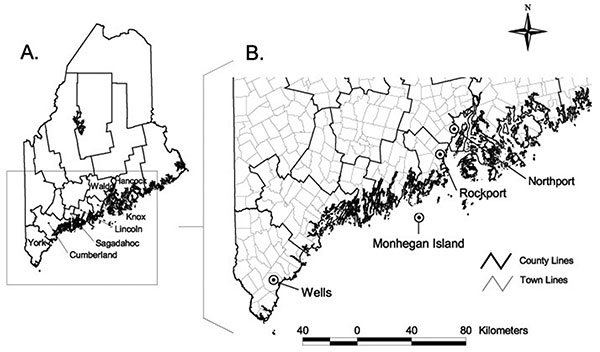Volume 10, Number 4—April 2004
Dispatch
Anaplasma phagocytophilum, Babesia microti, and Borrelia burgdorferi in Ixodes scapularis, Southern Coastal Maine
Figure

Figure. A. Counties in southern Maine where ticks were collected. B. Four towns where ticks infected with Anaplasma phagocytophilum or Babesia microti were found.
1Dr. Caporale was working at the University of Maine at Orono at the time of the study. She is currently at the Department of Biology, University of Wisconsin–Stevens Point, Stevens Point, WI.
Page created: February 09, 2011
Page updated: February 09, 2011
Page reviewed: February 09, 2011
The conclusions, findings, and opinions expressed by authors contributing to this journal do not necessarily reflect the official position of the U.S. Department of Health and Human Services, the Public Health Service, the Centers for Disease Control and Prevention, or the authors' affiliated institutions. Use of trade names is for identification only and does not imply endorsement by any of the groups named above.